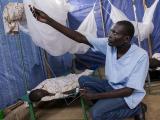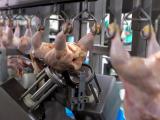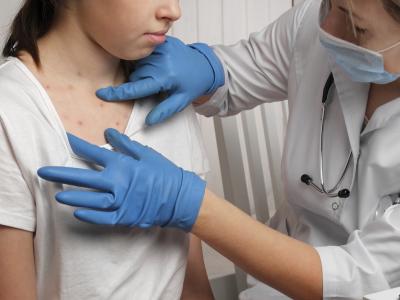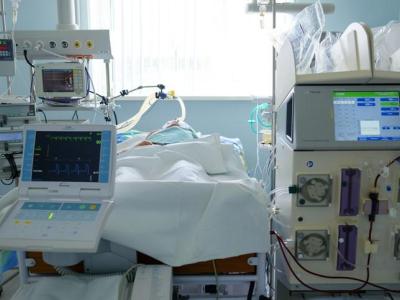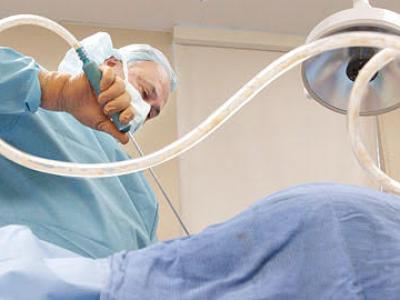Jul 8, 2003 (CIDRAP News) The five federal agencies most involved in biodefense face a talent shortage that could keep them from responding effectively to a major bioterrorist attack, according to a new report by a nonprofit group that works on civil service issues.
Federal compensation systems and hiring processes badly handicap the agencies in competing with private companies and academia to hire and keep top biodefense specialists, the report states. To make matters worse, up to half of the federal workers in biodefense-related jobs will be eligible to retire within the next few years, and the flow of new talent entering the workforce is static or shrinking.
Amid efforts to strengthen the nation's bioterrorism preparedness, the need to build a skilled workforce has been consistently overlooked, says the report by the Partnership for Public Service. The Washington, DC, group describes itself as a nonpartisan organization dedicated to recruiting and retaining excellence in the civil service.
"Perhaps more than any other terrorist threat, bioterrorism will place huge burdens on small pools of medical, scientific and technical expertise," the document states. "These organizations are already exhibiting hairline crackssome would say fracturesthat may presage disaster."
The report focuses on three agencies in the Department of Health and Human Services (HHS)the Centers for Disease Control and Prevention (CDC), the National Institute of Allergy and Infectious Dsieases (NIAID), and the Food and Drug Administration (FDA), and two in the US Department of Agriculturethe Food Safety and Inspection Service (FSIS) and the Animal and Plant Health Inspection Service (APHIS).
Titled "Homeland Insecurity: Building the Expertise to Defend America from Bioterrorism," the report says the demand for biodefense skills is growing while the projected supply is not. By 2010, the demand for biologists is expected to grow by 20% and the need for physicians by 25%. But the number of people earning advanced degrees in biology decreased through the 1990s, and the flow of new medical professionals has stayed generally constant for the past 20 years, the authors report. Further, many new graduates can't go to work for the federal government because they are not US citizens.
Federal officials who were interviewed by the authors confirmed that they face a consistent shortage of available talent. In addition, students often "do not perceive biodefense as a viable career option" when compared with private-sector work.
Another problem is that federal agencies often can't pay their existing skilled personnel enough to keep them from accepting outside job offers, according to the report. Officials from the CDC, NIAID, and FDA reported losing some of their most skilled employees to academic and private-sector organizations that offered them 30% to 40% pay increases.
Part of the difficulty is that nongovernmental organizations typically offer major financial rewards for outstanding performance, whereas the federal system is "a slow-moving world where civil servants are progressively rewarded as they remain with the government for a lifetime." One employee who was interviewed said federal pay systems make no distinction between productive and unproductive workers.
The graying of the biodefense work force also threatens to hurt preparedness, the report contends. About 45% of CDC workers with medical backgrounds will be eligible to retire within 5 years, and similar or even higher numbers will be eligible at the NIAID and FDA. Meanwhile, younger employees in biodefense are relatively scarce. For example, the CDC has 11 microbiologists over age 40 for each one younger than 40. Overall in the five agencies, biology professionals older than 40 outnumber their younger colleagues by almost 2 to 1.
Aggravating all of the difficulties, the document says, are problems with federal workforce planning and the hiring process. There is no government-wide coordination of recruitment for the agencies involved in biodefense, and human-resource support in federal agencies has declined 27% since 1992. Further, human resource support in HHS agencies has decreased in the past year because of an effort to centralize human resource activities. And the hiring process, hobbled by a maze of paperwork and rules, is slow and cumbersome.
The report's authors offer four proposals to address the problems they describe:
- Conduct a national audit "to identify the size and composition of a biodefense corps needed to protect against and respond to likely bioterrorism scenarios." This should include creating a "single point of accountability" for monitoring biodefense staffing progress.
- Use incentives and other tools to induce agency leaders to recruit, develop, and retain the best biodefense specialists.
- Increase agencies' authority and resources to develop hiring and pay systems that will enable them to compete for the best people, and reform the hiring process to meet the needs of agencies.
- To expand the pool of biodefense talent, invest in biodefense education through scholarships, student loan repayment, ongoing training, and job rotations between the public and private sectors.
See also:
Executive summary of "Homeland Insecurity: Building the Expertise to Defend America from Bioterrorism"





